- europages
- >
- COMPANIES - SUPPLIERS - SERVICE PROVIDERS
- >
- force sensors
Results for
Force sensors - Import export
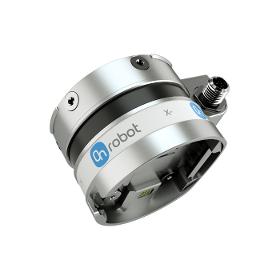
SAMSYS GMBH
Germany
The OnRobot force-torque sensor provides accurate force and torque measurement along all 6 axes. This gives you precise control during difficult assembly, polishing, grinding or deburring. In addition, the HEX software offers path recording, force control and special functions for insertion. This reduces the integration time for your production line. Our sensors are suitable for most of the industrial robot arms currently in use. Common applications are polishing, grinding, deburring and assembly. They can also be used for teach-in applications and collision detection. Currently available models: HEX-E – High precision, HEX-H – Low deformation, HEX-E QC, HEX-H QC Seamless integration into the robot of your choice. For example Universal Robots, Nachi, Doosan, Yaskawa, TM Robot, Kawasaki, ABB, Kuka, Hanwha, Fanuc.
Request for a quote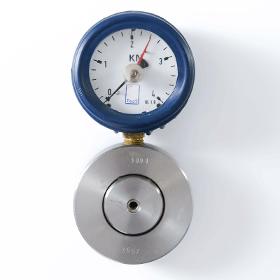
TEST GMBH
Germany
The small dimensions of the hydraulic force transducers of the model series TesT 1001 / 1011 / 1021 as well as the flat building method permit versatile applications. The small transducers were conceived for occasional control measurements, e.g. for adjusting or service work. The indicating instruments of model versions 1001 and 1011 have a diameter of 63 mm. The indicating instrument of model version 1021 can have a diameter of 63 mm or 100 mm. All model versions possess a drag indicator to display peak values.
Request for a quote
FRIEDRICH VOLLMER FEINMESSGERÄTEBAU GMBH
Germany
Precise even with low strip tension The segment rolls were developed specially for use in stretch bending levellers. The extremely free-running measuring rings permit high-precision shape measurement even with very low strip tensions. A rigid tubular section which forms the shaft of the roll supports several pivotably mounted measuring rings. They form the outer shell of the measuring roll over which the strip passes. Force sensors inside the measuring rings detect the force resulting from the strip tension. The sensors have high resolution, are overload-proof and maintenance-free. The data are transmitted through the centre axis of the roll and output as a Profibus signal.
Request for a quote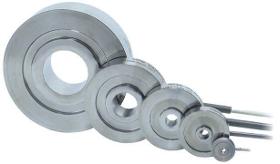
BURSTER PRÄZISIONSMESSTECHNIK GMBH & CO KG
Germany
The force to be measured must be introduced axially and perpendicularly to the entire surface of the inner and outer bands of the sensor in the opposite direction. Conversion of the acting force into an electrical output signal is performed by strain gages connected together in a full bridge circuit. To achieve optimal accuracy, the base of the sensor should rest on a smooth level surface, hardened to at least ≥ 58 HRC with sufficient dimensions. The base cover welded to the surface has a stabilizing effect on the sensor element. Lateral forces must be avoided anyway as they distort the measured results. Tension and bending relief for the sensor cable is to be carried out on the machine side. FEATURES: — Measuring ranges from 0 ... 100 N to 0 ... 200 kN — Centric throughout hole — Flat disc design — Made of stainless steel — Completely welded sensor body — Nominal characteristic value standardization possible — burster TEDS optionally available
Request for a quote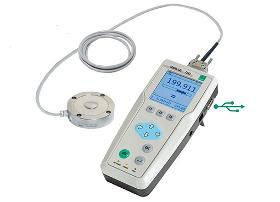
BURSTER PRÄZISIONSMESSTECHNIK GMBH & CO KG
Germany
The force measuring chain is an universal reference measuring chain for the calibration of press-fit force measuring equipment. It finds applications in the quality assurance, commissioning and equipment monitoring fields. A DAkks calibration certificate is included so that the force measuring chain can be traced back. The calibration is traceable through accreditation at the German Accreditation Body. The calibration certificate records the displayed values for mounting positions at 0°, 120° and 240°. During calibration in field, the reference load cell is inserted in line with the flux of the press-fit measuring equipment. The force application is of central significance here for the quality of the measurement. Special force application parts are required, so that the line of action of the force agrees as exactly as possible with the geometrical axis of the load cell that is to be measured (central loading).
Request for a quote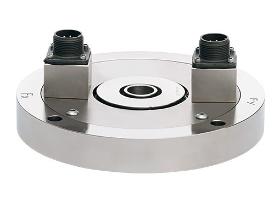
BURSTER PRÄZISIONSMESSTECHNIK GMBH & CO KG
Germany
Inside the multi-component force transducer are two webs, each offset by 90°, each with a strain gage full bridge, which convert the radially acting X / Y forces on the guide bush into an electrical signal. Due to the sensor body made from a block with its special structure, the sensor has a very high degree of dimensional accuracy and low crosstalk between the two forces. Due to the special design, the sensor has excellent linearity properties and is designed for a long service life in dynamic applications. The two independent signal connections allow flexible adaptation and further processing. Features: — Measuring ranges: 0 ... 4448 N / 0 ... 2224 N (0 ... 1000 lbs / 0 ... 500 lbs); 0 ... 8896 N / 0 ... 4448 N (0 ... 2000 lbs / 0 ... 1000 lbs) — Further measuring ranges on request — Non-linearity < 0.1 % F.S. — Low cross talk < 0.75 % F.S. — High dimensional accuracy, because sensor is made from one part — Excellent price/performance ratio
Request for a quote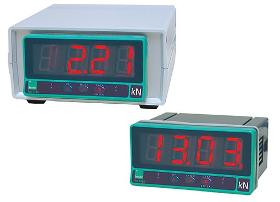
BURSTER PRÄZISIONSMESSTECHNIK GMBH & CO KG
Germany
The range of functions has been limited deliberately to ensure operation is simple and self-explanatory. With its unique, large and clear digit height of 20 mm, the digital display can be installed easily in process control panels and control cabinets. Thanks to the large choice of measurement signals that can be indicated, the display is ideal for use in a huge range of industry-based applications. As a simple and compact digital display, it can also be used as a multi-channel solution in laboratory or test systems, where several different measurements may need to be taken and displayed simultaneously. Specific characteristics: — Less expensive digital display — For force, pressure or torque measurements using gauge sensors — Two limit alarms optionally available — Extremely easy-to-read display with 20 mm digit height — Display range -1999 to + 9999 — TARE function — Scaling possible using teach-in procedure or by entering sensor data directly
Request for a quote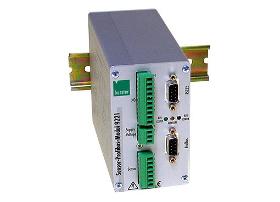
BURSTER PRÄZISIONSMESSTECHNIK GMBH & CO KG
Germany
The newly developed sensor PROFIBUS module model 9221 is predestined for the integration of various analog sensor output signals into complex, net worked and peripheral automation structures. This module finds its fields of application in the industrial automation technology as well as the test rig technology based on its secure and reliable transfer mode, the fast transfer speed and its simple construction. The inputs (e.g. PLC signal gauge) and outputs in addition to the external control allow a zero compensation by trigger via proximity switch or fast alerting on passing of set point values. Industrial type connection and mounting techniques enable the user the adaption and integration in the existing mechanical and electrical environment. The excellent quality of measurement together with the high grade capture of mean values also enable the application in research and development. The use of standardized PROFIBUS protocols makes the connection an easy task for the programmer.
Request for a quote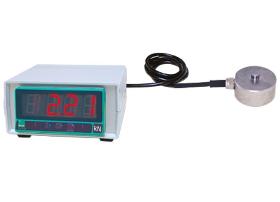
BURSTER PRÄZISIONSMESSTECHNIK GMBH & CO KG
Germany
The force measuring chain has been developed for applications where the requirements for precision are not the primary focus, but rather where an economical purchase price and simple functionality are the key criteria. The sensor‘s strain gauge technology allows both static and dynamically changing forces to be measured. The large display means that the force acting on the sensor can be read easily. The four integrated threaded holes allow the sensor to be integrated quickly and easily into existing production and assembly equipment. Typical applications include: —Testing the strength of welded joints —Sports medicine —Monitoring the clamping force of hose connections The body of the sensor is a flat, cylindrical disk, into which a domed force application knob is integrated. It is important that the force is applied axially to the center of the sensor.
Request for a quote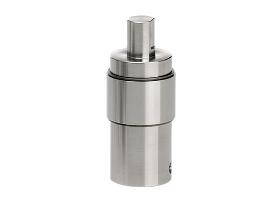
BURSTER PRÄZISIONSMESSTECHNIK GMBH & CO KG
Germany
The Load cell model 8451 has been developed for measuring the forces that occur during press operation. The internal measuring elements have a rugged design, which mean they can cope reliably with the steep force curves that are typical of press applications. They can be fitted or replaced quickly and easily on the press ram without the need for additional components around them. The force sensor is placed between the tool and the press ram and can thus measure the actual compression force directly in the axis of operation. The load cell measures the compression forces between the circular contact surfaces of plunger and tool. The pin on its top side and hole on its lower face are simply provided for mechanical fixing and centering the components correctly. The connecting cables are suitable for drag chains, designed for many movements and stably fastened in the sensor housing.
Request for a quote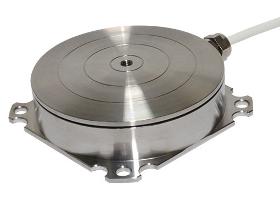
BURSTER PRÄZISIONSMESSTECHNIK GMBH & CO KG
Germany
With its flat construction this force sensor is specially designed to be fitted to a pedal. By this, the operator's forces for each respective action, for example brake tests, can be measured directly and the reaction of the vehicle or machine can be designated. This applies to real test drives, as well as in driving simulators. Due to the special construction of the membrane, it is irrelevant whether an upright or hanging pedal is concerned. The sensor is designed in a way that unavoidable lateral forces have as little impact on the measurement result as possible. Using a central internal thread on the control surface, various machine-related adaptor parts can be easily mounted. Because the pedal is convex-shaped on its surface, the pedal force sensor has a very rigid base plate and therefore can easily be applied to various geometrics. The mounting can even take place on a pedal with an elastomer covering.
Request for a quote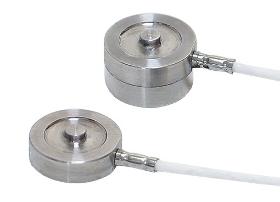
BURSTER PRÄZISIONSMESSTECHNIK GMBH & CO KG
Germany
This miniature force sensor was optimised with respect to its height and is, at only 3.4 mm, the lowest known sensor with strain gage technology. Hardly higher than the diameter of its connection cable, it can also be housed in conditions where space is limited. Along with its minimal geometry, the force sensor is also particularly light. It has a high resonance frequency to follow quickly changing load alternations. Despite its extreme miniaturisation, in its application it remains completely robust and suitable for industry, not only with regard to the highly flexible cable connections or the full welding of sensors for the measurement ranges ≥ 0 … 10 N. The miniature compression force sensors are flat, cylindrical discs with covered bottoms. The central load application button for taking on compression forces is an integrated part of the top, which is the sensor‘s membrane.
Request for a quote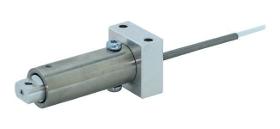
BURSTER PRÄZISIONSMESSTECHNIK GMBH & CO KG
Germany
The sensor element consists of a double bending beam with applied strain gages. Changes in the ohmic resistance of the strain gage fullbridge caused by applied forces are converted into electrical voltages. The precise value (characteristic value) of the output voltage, resulting from the application of a rated force to the sensor, is specified in the accompanying calibration protocol. The sensor has to be mounted by two screws on the cable side. The opposite side is meant to receive applied forces (loads). Once the rated stress or strain is exceeded by 20 %, further deflection of the bending beam is prevented by an integrated, mechanical stop. This protects the sensor element against permanent deformation.
Request for a quote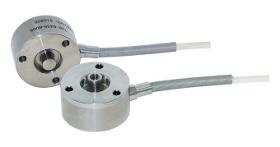
BURSTER PRÄZISIONSMESSTECHNIK GMBH & CO KG
Germany
The tension and compression load cell model 8435 enables universal and fast installation, requires hardly any installation space and upgrades with technical data that are readily achieved by larger sensors. Due to its excellent price-performance ratio with regard to its mechanical and electrical data, the force sensor finds its place in products that are also manufactured in larger quantities and calculated with a small budget. This model of load cell uses proven strain gage technology to perform measurements. Strain gages are applied to the sensitive element and connected to form a full bridge. FEATURES Measuring ranges from 0 ... 200 N up to 0 ... 5000 N Small dimensions Inexpensive execution Stable anti-kink protection Made of high quality stainless steel Connecting cable suitable for drag chains burster TEDS optionally available
Request for a quote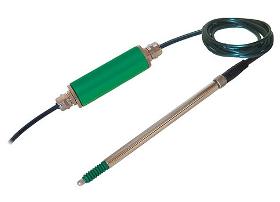
BURSTER PRÄZISIONSMESSTECHNIK GMBH & CO KG
Germany
Inductive displacement sensors of this series measure linear displacements and indirectly all mechanical values convertible into displacements by additional equipment (i.e. tension and compression forces, extension, torque, vibration). The sensor body equipped with a connector has an outer diameter of only 8 mm and therefore is especially well suitable for the integration in dimensionally restricted structures. Typical application fields are displacement and extension measurements on: —Machines —Servo systems —Motor vehicles —Test benches —Production plants The cylindrical case made of stainless steel, houses a differential transformer (LVDT). It consists of a primary and two secondary coils with axially moveable core. A displacement of this core changes the magnetic induction of the coils. The INLINE carrier frequency amplifier converts the displacement into a direct proportional electrical DC voltage.
Request for a quote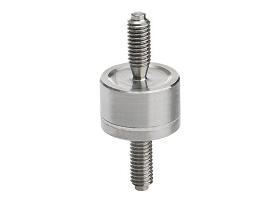
BURSTER PRÄZISIONSMESSTECHNIK GMBH & CO KG
Germany
Load cell model 8417 measures the tension or compression force between both axially mounted metric exterior threads on the cylindrical sensor housing. Forces are only applied to the threadings, which are especially long, to accommodate counter nuts and must not be affected by external influences such as bending, lateral force or torsion. Any contact with units affixed to the sensor housing - even on the front - must be avoided. The measurement element is a membrane perpendicular to the axis of the sensor with a strain gage full bridge applied to the inner surface, which requires stable excitation with a rated value of approx. 1 mV/V. The connection cable is led radially out of the housing through a sleeve which is used for strain relief. FEATURES: —Measuring ranges from 0 ... 10 N to 0 ... 5 kN —Very small dimensions —Made of stainless steel —Rugged construction —Simple screw mounting —burster TEDS optionally available
Request for a quote
SAMSYS GMBH
Germany
The Intelligent Robot gripper RG2-FT is a modern gripper with additional sense of touch and intelligence. It has an integrated force/torque and proximity sensor for extremely precise automation. This enables real collaboration with human users and supports them like a helping hand. Insertion is faster and more precise. For example, this gripper can easily insert pins, which would be difficult for humans. Due to the advanced sensor technology, the gripper allows the robot to feel during assembly when a part is correctly assembled. The RG2-FT Robot gripper offers high productivity and rapid deployment, saving technicians many hours of man-hours during integration. It´s the world’s first robot gripper with integrated force/torque and proximity sensors that can see and feel objects to ensure extremely safe handling
Request for a quoteDo you sell or make similar products?
Sign up to europages and have your products listed
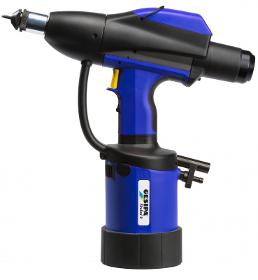
SFS GROUP GERMANY GMBH - GESIPA
Germany
FireFox® 2 C – With setting process monitoring This tool is based on the proven TAURUS® C model. Here the setting process is analysed via integrated electronics using stroke and force sensors. The user can defi ne an OK window by means of a special software. A coloured LED on the tool shows the results of the setting process monitoring which can also be recorded and processed via data line. Apllications In the serial production of safety component parts as well as in automated setting processes the FireFox® C allows checking and documentation of the setting process. Advantages • High process safety • Documentation of each individual setting process • Less scrap since errors can be immediately identifi ed
Request for a quote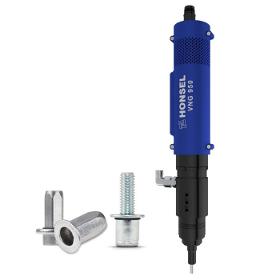
HONSEL-GROUP
Germany
Electric-hydraulic setting tool for stationary automated or hand-held processing of blind rivet nuts and studs. Perfect combination of high setting force, slim design and low weight. The narrow design allows a small centre distance for modular design. — Process monitoring DMSD 2G Displacement encoder with resolution 0.01 mm Sensor technology force measurement via hydraulic pressure — Hydraulic connection for pressure intensifier — Mechanical connection — Tolerance compensation Position offset 1.5 mm Angular misalignment 8° — Electric motor Monitoring of torque and rotationangle during spindle mounting and dismounting — Hydraulic hollow piston cylinder stroke 12 mm setting force up to 58 kN — Quick-change system For fast handling and low-maintenance operation Low tool costs by using DIN screws as mandrel (option)
Request for a quote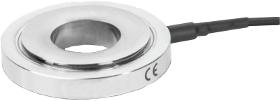
ETH MESSTECHNIK GMBH
Germany
The SM71 series force sensors were specially developed for measuring clamping forces. The short measuring path of 0.019 - 0.14 mm (depending on the measuring range) and a natural frequency in the kHz range guarantee optimal results even for highly dynamic tasks. Typical applications include the simple determination of screw preloads, where the force sensor is used as a “measuring washer”. The very good reproducibility is less than one percent of the nominal load. The sensor is available in measuring ranges from 20 up to 2000 kN. Hardened washers are already included in the scope of delivery for quick and easy installation. The extremely simple and robust design is made entirely of stainless steel (protection class IP68).
Request for a quote
NANOSYSTEC GMBH
Germany
The work area of 700 x 900 mm offers sufficient space. The motion system works with linear motors and linear optical encoders which guarantee extremely high resolution and precision – even at the high speed due to the excellent acceleration of the linear motors. The empty surface of the vertical stage is equipped with an interface for fast tool changing. Sensors measure the force applied by the tools to the device. The desired forces can be programmed so that each device is handled ideally.Eutectic bonding is performed with high energy laser radiation and with a wavelength matched to the device. Temperature sensors transmit the values to the control electronics and the power is precisely adapted. In this way, the temperature follows the desired profile fast and accurately. NanoBond utilizes precision dispensers for gluing processes. These instruments apply a volume from nanoliters to several milliliters. In most application
Request for a quote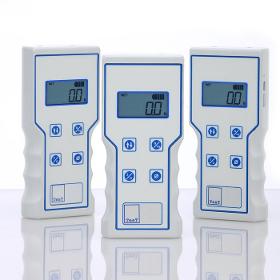
TEST GMBH
Germany
The TesT electronic indicators of type 816 contain a process controlled electronic unit with most modern software. They can be combined with all TesT force sensors. The standard version of this device includes the usual functions in quality assurance: Peak value memory for tensile and compressive forces, selectable units: N, kg or lbs, On / Off switch. A list of options can be found below in the technical data. Basic settings, that had been stored once, even remain when the device has been switched off. After turning it on the device is immediately ready for usage again. This handy case with its ergonomic design is suitable for right and left handers. A fixed mounting in a testing fixture is also possible. Rechargeable batteries provide a smooth and mobile use for more than 10 hours. These robust devices are suitable for industrial applications and can be recharged overnight.
Request for a quote
KURT MAIER MOTOR-PRESS GMBH
Germany
We supply from our existing stock Kalefeld elprom- aluminium flameproof motors / hazardous motors Ex de IIC T4 in frame size 56 - 132 ( 2- and 4- poles ) 0, 12 - 1 1 kW . All motors on stock are with Ptc thermistors and fixed bearing . Other frame sizes and versions are available within 4-5 weeks after receipt of order . Special applications Accessories Forced ventilation Encoder Bearing sensor
Request for a quote
KURT MAIER MOTOR-PRESS GMBH
Germany
RAEL, founded in Genoa in 1969 as a electric motors repair and rewinding company, has become an established name in project and production of electric motors for potentially explosive atmosphere. Since 1986 the company grew considerably and moved itself to Predosa where both production and offices are actually located. We supply from our existing stock Kalefeld RAEL- aluminium flameproof motors / hazardous motors Ex de IIC T4 in frame size 56 - 132 ( 2- and 4- poles ) 0, 12 - 1 1 kW . All motors on stock are with Ptc thermistors and fixed bearing . Other frame sizes and versions are available within 4-5 weeks after receipt of order . Special applications Accessories Forced ventilation Encoder Bearing sensor
Request for a quoteResults for
Force sensors - Import exportNumber of results
25 ProductsCountries
Company type